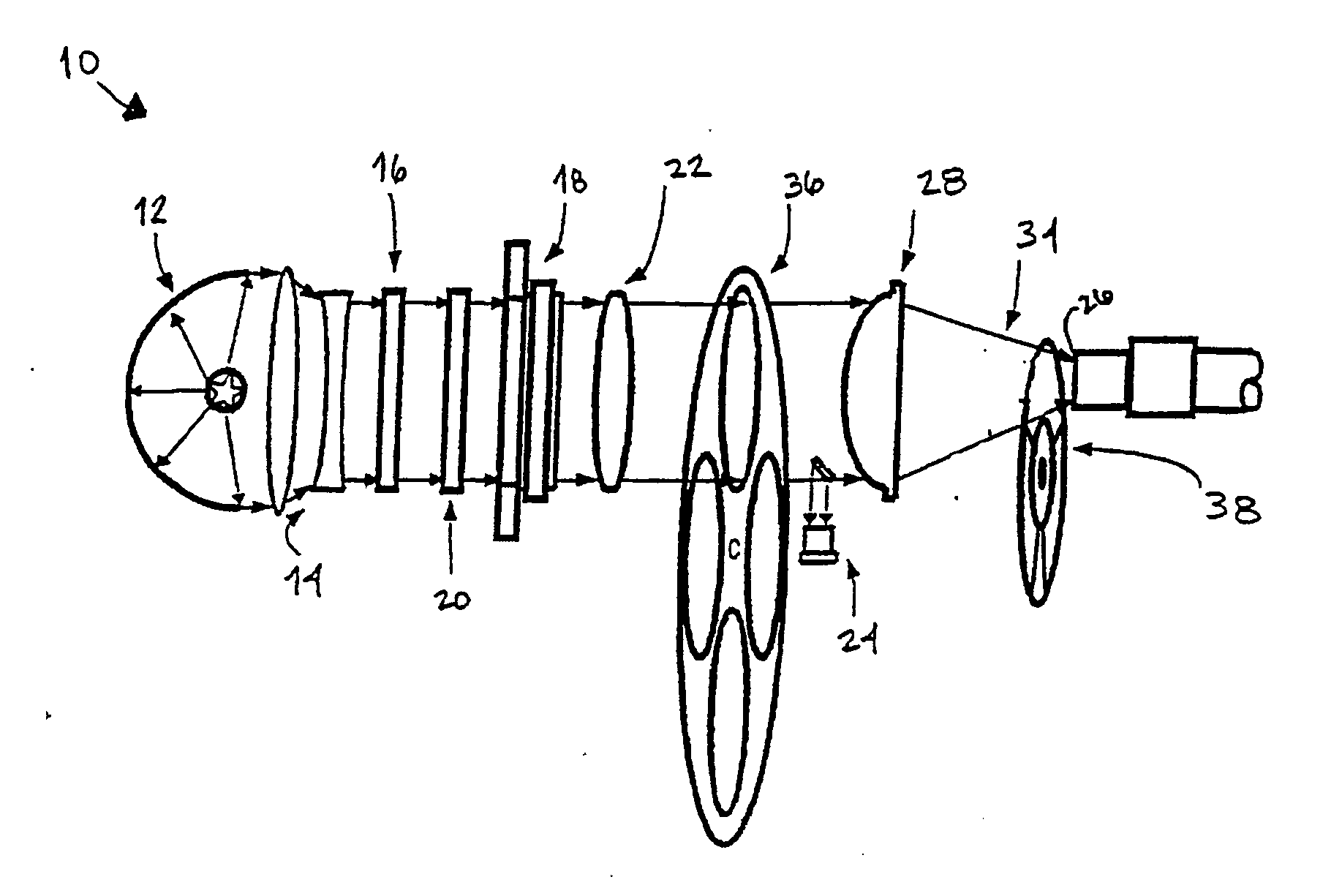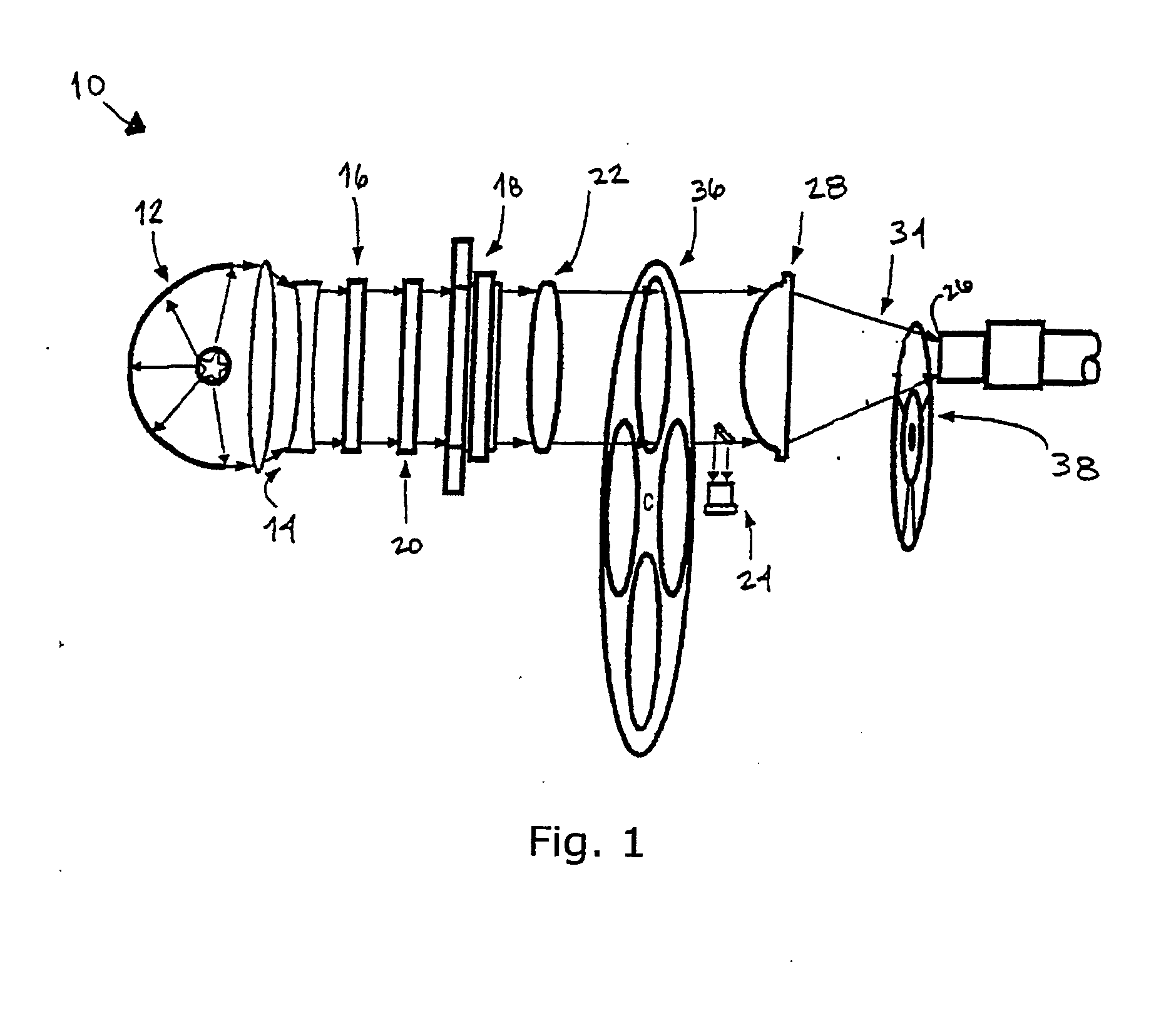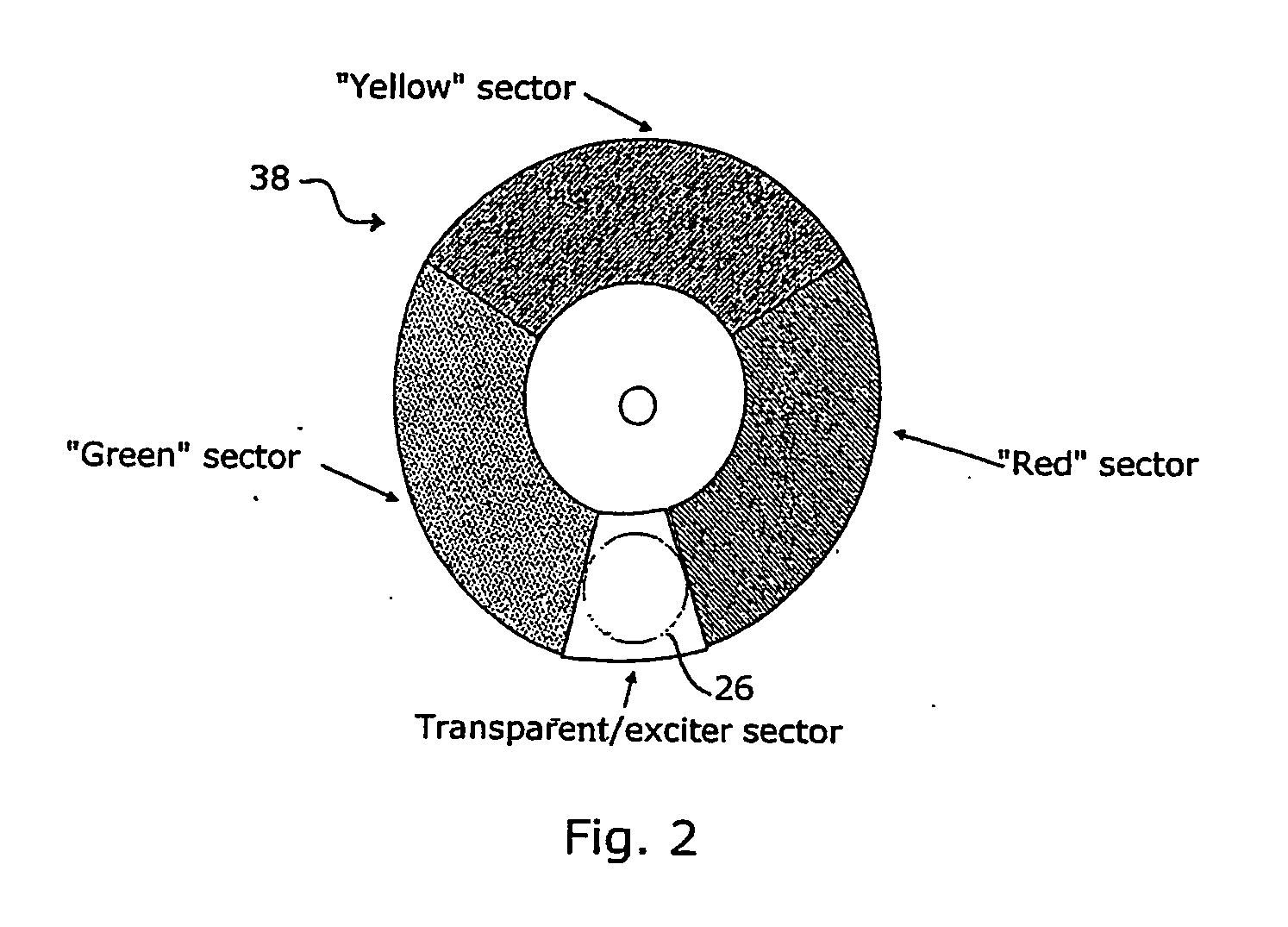Illumination method and system for obtaining color images by transcleral ophthalmic illumination
a transcleral ophthalmic and color image technology, applied in the field of illumination methods and systems for obtaining color images by transcleral ophthalmic illumination, can solve the problems of enlarge the observable field to the whole fundus, impede the ability of light that reaches the interior of the eye, and not dilate pupils, so as to achieve the effect of compromising eye safety
- Summary
- Abstract
- Description
- Claims
- Application Information
AI Technical Summary
Benefits of technology
Problems solved by technology
Method used
Image
Examples
second embodiment
[0057]FIG. 3 shows illumination system 10, having a light path similar to that of FIG. 1, in which a halogen or metal-halide lamp 12 produces a well-defined collimated light beam, with the aid of matching beam-expander optics 14. Hot mirror 16 is placed in the optical path close to the light source to remove ultraviolet (UV) and infrared (IR) components of the light spectral content. In this embodiment, the main beam is split into three “colored” channels (R, Y, G) using R-Y-G dichroic “X-cube” splitter 40 with two 45° tilted mirrors 42 that deflect the side emerging channel beams to produce three parallel beams. To overcome a possible loss of some polarized light beam components due to polarization sensitivity of X-cube splitter 40, a polarization converter prism 44 is inserted in the light path preceding X-cube splitter 40, so as to transform the impinging randomly polarized light beam into a linearly polarized one.
[0058] Three electro-optical fast shutters 46 (by way of example, ...
third embodiment
[0060] Referring now to FIG. 4, illumination system 10 is shown in which the splitting of the main channel into R, Y and G sequential synchronized light bursts is accomplished using a series of three 45° tilted beam splitters: 30R / 70T (30% reflecting / 70% transmitting) beam splitter 52, 50R / 50T beam splitter 54 and 45° tilted mirror 56, and adding an R, Y or G optical filter to each of the channels. Alternatively, a series of three 45° tilted dichroic spectral beam splitters for R, Y and G may be used (e.g. J43-454, J43-455 and J43-458 correctors marketed by Edmund Scientific, Barrington, N.J., USA).
[0061] The use of three 45° tilted beam splitters is the least efficient method of color splitting, as compared to the embodiments shown in FIGS. 1 and 3, due to the partitioning of the total beam power into three separated channels with about one third of the total power content in each channel. Therefore, the optical filters in each channel separate out only part of the spectral content...
PUM
 Login to View More
Login to View More Abstract
Description
Claims
Application Information
 Login to View More
Login to View More - R&D
- Intellectual Property
- Life Sciences
- Materials
- Tech Scout
- Unparalleled Data Quality
- Higher Quality Content
- 60% Fewer Hallucinations
Browse by: Latest US Patents, China's latest patents, Technical Efficacy Thesaurus, Application Domain, Technology Topic, Popular Technical Reports.
© 2025 PatSnap. All rights reserved.Legal|Privacy policy|Modern Slavery Act Transparency Statement|Sitemap|About US| Contact US: help@patsnap.com



